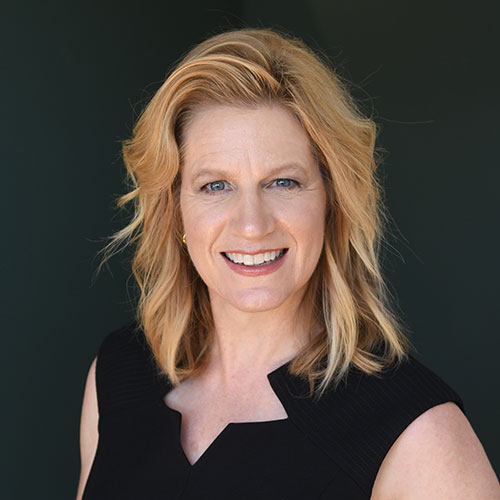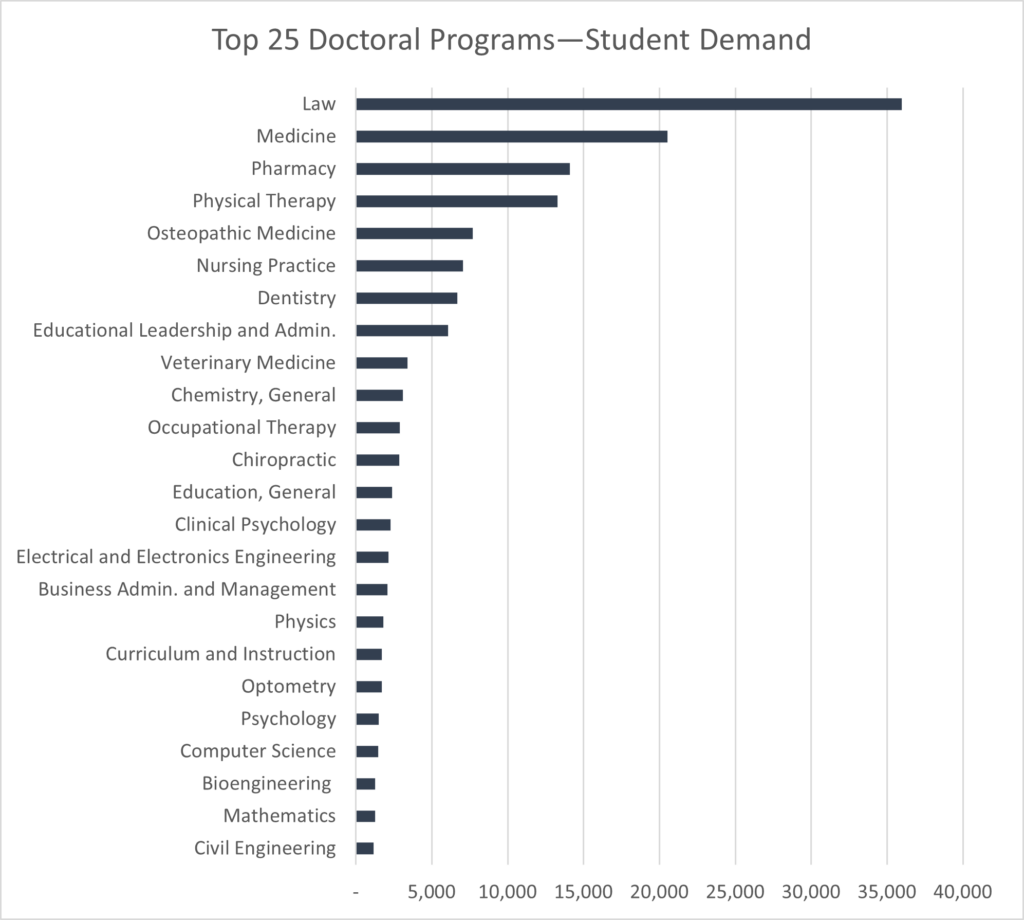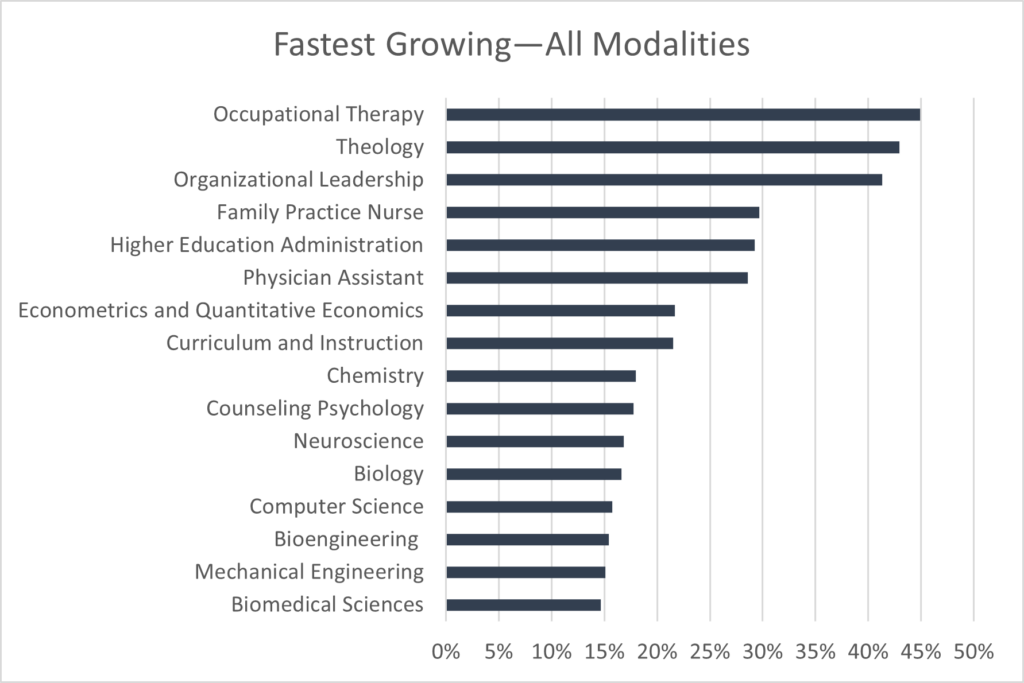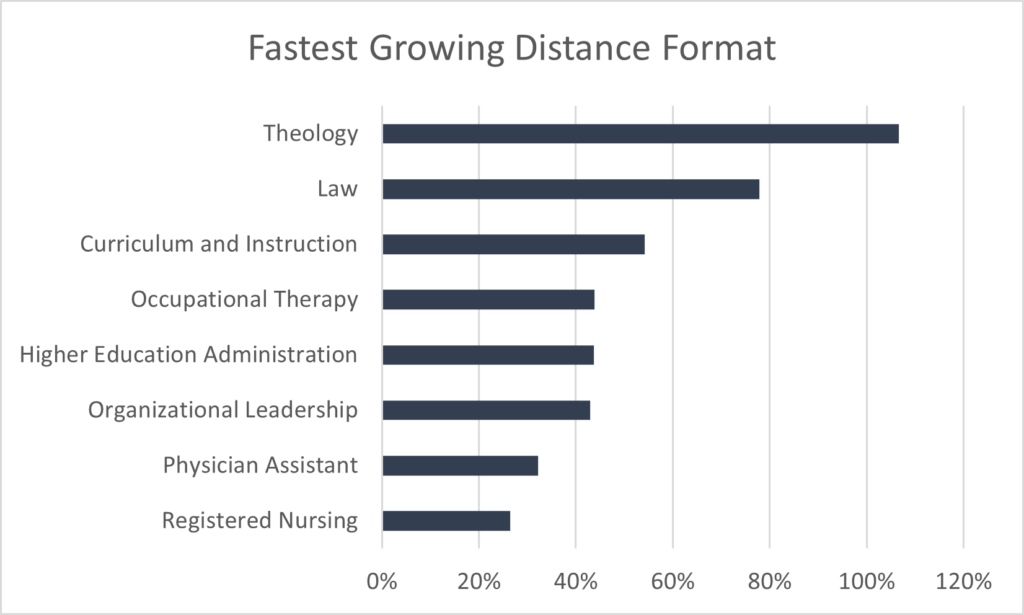
Nadine Brock
February 15, 2024
Student demand for doctoral degrees continues to grow. The most recent data posts a year-on-year growth rate of 5.2% across all disciplines, professional and research/scholarship degrees combined. Public, private, and online universities continue to adjust their doctoral offerings to meet student demand. In specific careers, students want to increase their skills for career promotions and salary increases by adding a doctoral degree.
| 2021 Volume | 2022 Volume | 21-22% | |
| Doctoral Awards in U.S. | 195,220 | 205,341 | 5.2% |
SOURCE: U.S. Department of Education, National Center for Education Statistics, Integrated Postsecondary Education Data System (IPEDS), Award completions data. Doctoral awards combining research, professional, and other award types. All delivery modalities included.
Not surprisingly, the largest volume doctoral programs are in law, health science occupations, and education. STEM and business programs are also among the top 25 highest-volume programs in the U.S.

Source: IPEDS Degree completions, top 25 doctoral programs in 2022 by volume. All disciplines, all doctoral award types, and all delivery modalities included.
Professional health sciences like Occupational Therapy, Nursing, and Physician Assistants are among the fastest-growing doctoral disciplines in the U.S. Education disciplines of Higher Education Administration and Curriculum and Instruction serving the education and teaching sector are on the rise too.

Source: IPEDS Degree completions, year-on-year growth at 7% or greater among all doctoral disciplines with at least 500 awards in 2022. All disciplines, all doctoral award types, and all delivery modalities included.
Others may be surprised to see sharp growth among these programs:
J.D. degrees in the distance format? Yes, it’s happening! Syracuse University’s J.D. Interactive program claims to be the first American Bar Association-accredited program in the U.S. The Syracuse program web page indicates synchronous and asynchronous online courses as well as six in-person residencies. Professionals need to keep jobs and tend to families so distance modalities (online, hybrid, low residence) are important to meet student demand.

Source: IPEDS Degree completions, year-on-year growth at 20% or greater among all doctoral disciplines with at least 400 awards in 2022 in the distance format.
Student demand trends are an important piece to consider but also relevant for academic program development are:
Altogether, student demand, labor market data, and competitive intelligence can shed light on the feasibility for a new academic program or a program change at any award level. Four in 10 new academic programs fail after launch, so you’ll want to be armed with a robust, data-supported proposal before investing. We’re ready to help you move fast!
Ready to research certificates for your institution? Email me to schedule a free consultation.
Related reading: What Certificates Should We Offer